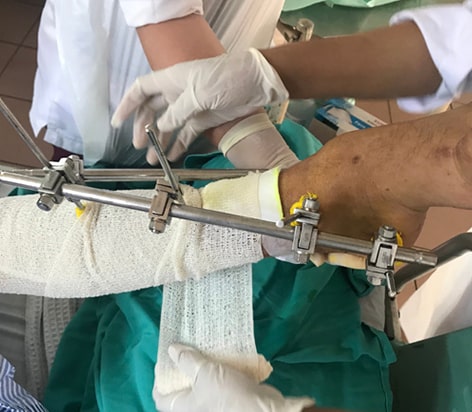
Limb reconstruction involves using several techniques to improve the anatomy and functional ability of deficient or deformed limbs. The surgeon realigns the bones and improves sensation and weight-bearing capacity. The conditions in which the limb reconstruction is performed are non-healing fractures, congenital deformities, bone tumors, post-traumatic deformities, and shortening/lengthening of the limb. The techniques include internal fixation, such as nailing or plating, and external fixation, such as monotube or Ilizarov frames.